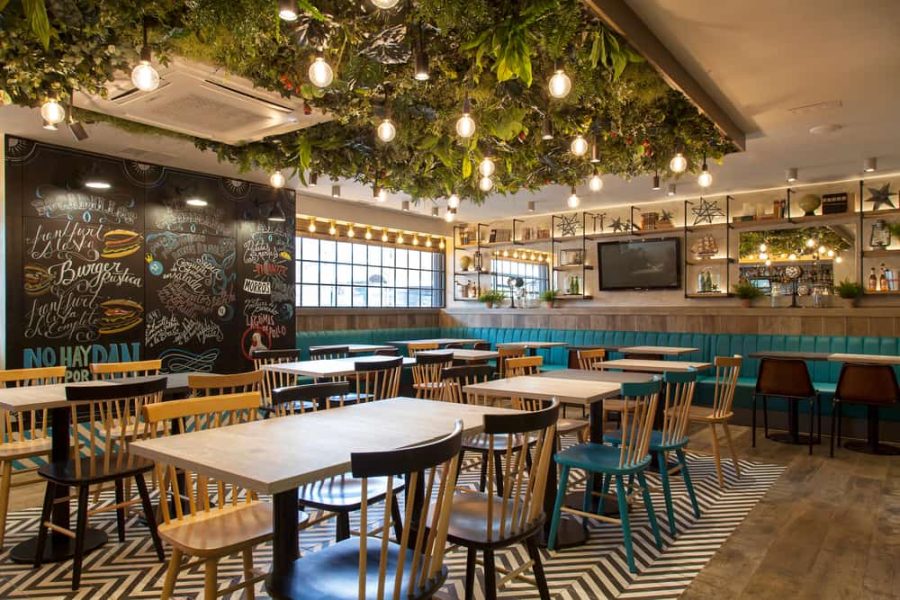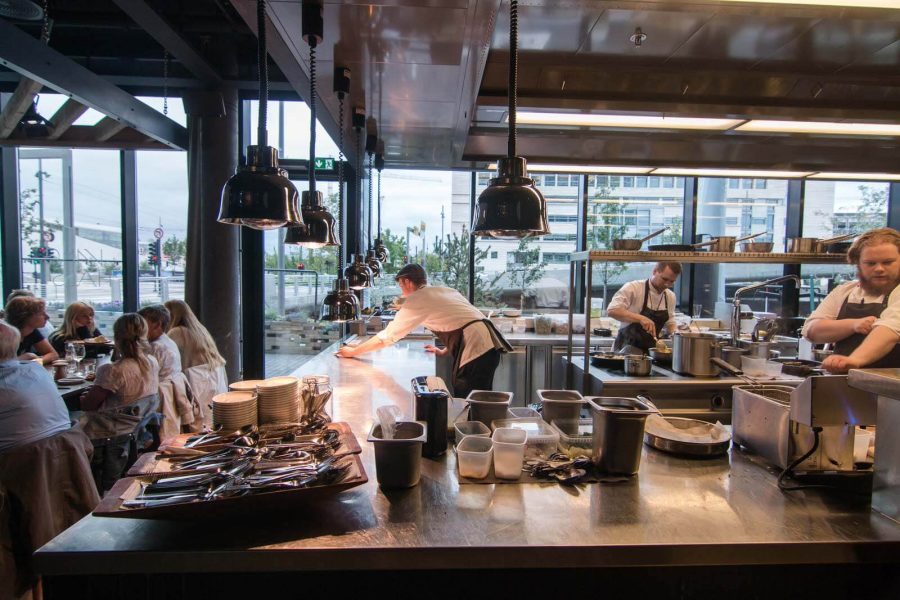Fine dining transcends mere sustenance; it orchestrates an immersive experience that tantalizes the senses and lingers in memory. What transforms a meal into an unforgettable event? This question explores the psychological nuances that define our dining experiences, such as ambiance, service, and food presentation. This restaurant guide delves into these elements through the prism of scientific research and expert opinions.
Ambiance: Crafting the Perfect Setting
The ambiance is the silent orchestrator of the dining experience. It includes decor, lighting, music, and the overall environment, significantly influencing our perception of a meal and its enjoyment.
Decor and Lighting
A study by Spence and Piqueras-Fiszman (2014) highlights how lighting and decor can change our perception of food quality and taste. Warm, soft lighting creates an intimate, inviting atmosphere, making food appear more appealing. Conversely, harsh lighting can create a sterile, unwelcoming environment.
Music and Soundscapes
Music is another crucial component of ambiance. Research published in the Psychology of Music (North, Hargreaves, & McKendrick, 1999) reveals that background music affects diners’ perceptions and enjoyment. Classical music, often associated with sophistication, can enhance the perceived quality of the dining experience.
Spatial Layout and Comfort
The spatial layout, including seating and table spacing, impacts diners’ comfort and privacy. Kimes and Robson (2004) found that diners prefer a balance of privacy and openness, allowing for comfortable conversation without feeling isolated.

Service: The Human Connection
Service is a defining feature of fine dining. It’s about efficiency and creating a personalized, memorable experience. The interaction between staff and diners significantly affects overall satisfaction and perception of the meal.
Attentiveness and Personalization
Parasuraman, Zeithaml, and Berry (1988) emphasized the importance of service quality in customer satisfaction. Attentive, personalized service, where staff anticipate and meet diners’ needs without being intrusive, fosters a sense of being valued, enhancing the overall dining experience.
Professionalism and Knowledge
The professionalism and knowledge of the staff are equally vital. Well-trained staff who can provide detailed menu information, suggest wine pairings, and accommodate special dietary needs instill confidence in the restaurant’s quality. Kim and Ok (2009) found that knowledgeable, professional staff positively influence diners’ perceptions and willingness to return.
Emotional Labor
Hochschild’s concept of emotional labor (1983) is particularly relevant in fine dining. Staff often manage their emotions and display positive behavior even in challenging situations, contributing to a pleasant, welcoming environment that enhances the dining experience.

Food Presentation: Visual Delight
Food presentation is an art that significantly impacts our perception and enjoyment of a meal. A dish’s visual appeal can stimulate appetite and anticipation, making the dining experience more memorable.
Visual Aesthetics
Zampollo et al. (2012) found that visually appealing food presentation enhances the perception of taste and quality. The arrangement of food, vibrant colors, and varied textures make a dish more enticing and enjoyable.
Plating Techniques
Plating techniques play a crucial role in fine dining. Michel, Velasco, and Spence (2015) suggest that the symmetry, balance, and use of negative space on a plate influence diners’ perceptions. Artistic plating that highlights ingredients and textures can elevate the dining experience, adding a touch of luxury and sophistication.
Garnishes and Edible Decorations
Garnishes and edible decorations add visual and sensory appeal. Harrar and Spence (2013) demonstrated that garnishes enhance visual appeal and contribute to the overall flavor profile. Thoughtfully chosen garnishes complement the main ingredients, adding complexity and depth to the dining experience.

The Multisensory Experience: Beyond Taste
Fine dining is a multisensory journey beyond taste, involving sight, smell, touch, and even sound to create an immersive experience.
Smell: The Olfactory Dimension
The sense of smell is closely linked to taste and plays a crucial role in our perception of food. Herz (2007) found that pleasant aromas enhance food taste and trigger positive emotional responses. Fine dining establishments often use aromatic elements to create an inviting, appetizing environment.
Texture and Mouthfeel
The texture and mouthfeel of food are essential components of the dining experience. Christensen (1980) suggests that the tactile sensation of food influences our enjoyment and perception of the meal. Fine dining chefs balance smooth, crunchy, and creamy textures to create a satisfying, dynamic experience.
Sound: The Acoustic Environment
The acoustic environment subtly but significantly affects the dining experience. Spence and Shankar (2010) found that background noise levels influence diners’ taste perception and enjoyment. Fine dining restaurants aim to create serene environments, minimizing disruptive noises and incorporating pleasant soundscapes.
The Influence of Dining Companions
The company we keep profoundly shapes our dining experiences. Social interactions and the presence of companions influence our perception of the meal and overall satisfaction.
Social Facilitation
Zajonc (1965) introduced the concept of social facilitation, where performance is enhanced in the presence of others. Companions enhance meal enjoyment in dining, as social interactions and shared experiences contribute to positive emotions and memories.
Emotional Contagion
Hatfield, Cacioppo, and Rapson (1993) discuss emotional contagion, the phenomenon where individuals unconsciously mimic and adopt the emotions of those around them. In fine dining, positive emotions and enthusiasm from companions enhance the overall experience, making the meal more enjoyable and memorable.
Creating Lasting Memories
The ultimate goal of fine dining is to create lasting memories. The elements of ambiance, service, and food presentation combine to form a cohesive, immersive experience that engages all the senses and leaves a lasting impression.
Narrative and Storytelling
Narrative and storytelling are powerful tools for creating memorable dining experiences. Escalas (2004) found that storytelling enhances the emotional connection to a product or experience. Fine dining establishments often incorporate storytelling into their menus, sharing the origins of ingredients, the inspiration behind dishes, and the chef’s creative journey. This narrative element adds depth and meaning, making the dining experience more memorable.
Surprise and Novelty
Surprise and novelty contribute to unforgettable experiences. Berlyne (1970) suggested that novel, unexpected stimuli enhance arousal and interest, leading to more memorable experiences. Fine dining chefs often incorporate surprising elements, such as unexpected flavor combinations, theatrical presentations, and interactive components, to captivate diners and create lasting memories.
Conclusion
In conclusion, the psychology of fine dining encompasses a complex interplay of elements, including ambiance, service, food presentation, and multisensory engagement. By understanding and optimizing these factors, fine dining establishments can craft unforgettable experiences that engage all the senses and leave a lasting impression on diners. Integrating scientific research and expert insights ensures every meal becomes a memorable and cherished occasion. Whether through the warmth of the lighting, the attentiveness of the service, or the visual appeal of the food, each element plays a crucial role in shaping the overall dining experience and creating lasting memories.

Biker, feminist, ukulelist, hand letterer and HTML & CSS lover. Acting at the intersection of art and computer science to craft meaningful ideas that endure. Concept is the foundation of everything else.
